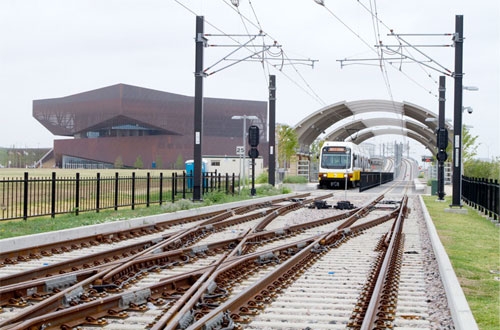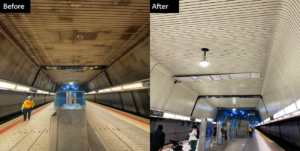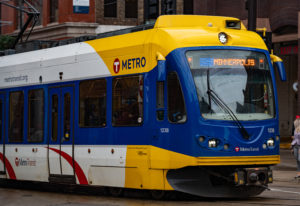DART celebrates 30th anniversary
Written by Jenifer Nunez, assistant editor
Dallas Area Rapid Transit (DART) turns 30 this month as the agency celebrates the anniversary of the vote to create DART. On Saturday, Aug. 13, 1983, residents in Dallas and 13 other cities elected to be a part of the new transit agency and contribute one percent in sales tax to fund it.
More than 101,000 people, out of 175,000 voters, cast their vote for transit. In Dallas County, it was the largest turnout for a referendum to date.
“Light rail, commuter trains or bus lanes: I didn’t have it firm in my mind, but I knew that this city needed to do something about transportation because we were growing fast,” Adlene Harrison, chairwoman of the first DART Board, said recently of the historic vote.
The voter-approved one-cent sales tax took effect in January 1984 and DART officially began operations.
On June 14, 1996, the first 11.2 miles of the 20-mile light-rail transit system opened on time and within budget. Later that year, the Trinity Railway Express opened the first 10-mile segment between downtown Dallas and Irving.
Thirty years after the vote, DART is one of the largest transit agencies in the Southwest, with the longest light-rail system in the country. The multimodal network generates nearly 105 million passenger trips a year.
“For the first 30 years, the agency has focused on getting the infrastructure in place and working together effectively,” said Gary Thomas, DART president and executive director. “Now that the integrated bus and rail systems cover a broad geographic area, we’re influencing how our region grows and how people get around.”
Construction of the original transit plan is nearly complete and DART is shifting much of its focus to increasing passenger capacity and maintaining the capital assets of a maturing transit system. Nonetheless, the agency is keenly aware that most of the population growth in North Texas is outside of the cities of the service area and that many of those residents commute into the DART system.
“Significantly expanding beyond the borders of the 13 service-area cities will increase rider access over a wider area, help sustain regional growth, enhance the economy and improve the quality of life through reduced congestion, pollution and urban sprawl,” said Walt Humann, the businessman known as the “father of DART,” who led the charge for the agency’s creation 30 years ago.
In March, the DART Board of Directors amended its policy on contracting for transit service outside its current service area. The new policy gives cities a gradual way to join the transit authority while being fair to residents of the 13 cities that have contributed the one-cent sales tax since 1984.
Within the first three years, the municipality must pay DART to prepare a long-term transit system plan and a supporting financial plan. And within four years, the city must call an election so residents can vote whether to join the DART service area and dedicate sales tax revenue to fund transit service.





